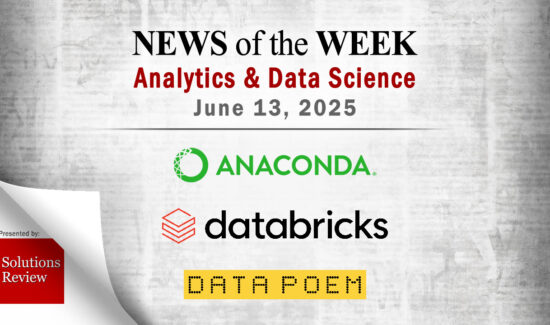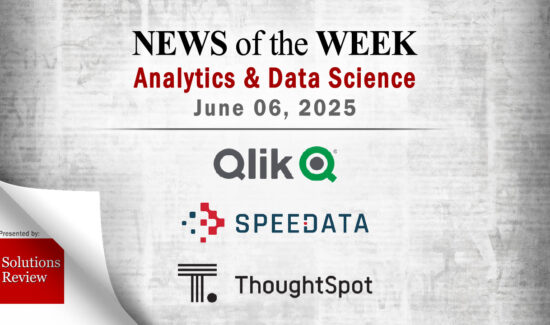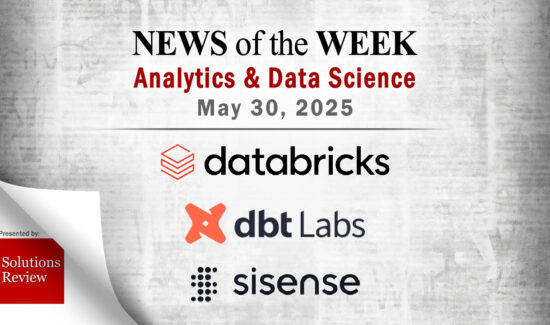Five Can’t-Miss Analytics and Business Intelligence Trends for 2020


Solutions Review has conducted a meta-analysis of the most common business intelligence trends for 2020. Our editors have aggregated data from all the freely available analytics and BI trends and predictions lists on the web. This shortlist is a compilation of those findings.
Business intelligence trends are pervasive in data analytics expert communities. Industry influencers, talking heads and vendor marketing representatives all have varying degrees of motivation for publishing their views on what technologies, use cases or best practices will mold the space in the future. In this way, it’s hard to trust any single author or organization, especially when utilizing these forward-thinking resources to put your organization in the best space to succeed.
This is why the editors of Solutions Review have compiled this business intelligence trends report. We’ve analyzed freely available trends and predictions resources on the web to help you make sense of what’s coming in 2020 and beyond. Trends and predictions come from the top independent analyst houses, research firms, and industry experts. They are “can’t-miss” because they represent the five most-prevalent examples throughout all the data we sorted, and we expect these to be pervasive in the industry for 2020.
5. Automated Analytics
Automation is impacting virtually every industry and business process, and data analytics software is about to become the next frontier. Automated analytics is heavily reliant on AI and machine learning. While some organizations are using this functionality to speed past manual data tasks, BI solution providers are increasingly tying automation to natural language processing. This will soon enable an entire swath of business users to run complex analysis simply by asking a question.
There’s a reason why Gartner predicted that more than 40 percent of data science tasks will be automated by 2020.
4. Mobile BI
It used to be true that mobile BI applications were good only for consuming analytic content. Mobile BI is making a comeback as organizations employ more business users in positions to do data analysis. This isn’t the only factor, as the rise of new AI and machine learning-influenced BI platforms are empowering those users to do mobile work that wasn’t possible just a few years ago. We recommend testing BI mobile apps via a free trial during vendor evaluation.
BARC’s BI Trend Monitor 2018 shows us that market penetration for mobile BI is growing. 28 percent of BI users reported that mobile BI is already in use within their organization, a nearly 10 percent increase from 2015.
3. Natural Language Processing and Conversational Analytics
Natural language technology enables BI users to ask business questions in plain language via text or voice. The technology encompasses capabilities like content categorization, topic discovery and modeling, contextual extraction, and sentimental analysis. NLP breaks down language into shorter, elemental pieces so you can better understand the relationships between data and explore how each piece works together. If you have non-technical BI users, we recommend evaluating analytics tools that feature natural language functionality.
According to Ventana Research, 33 percent of organizations expect natural language query and natural language generation to be standard capabilities in business intelligence software shortly.
2. Auditable AI
Auditable AI (or explainable AI) is an emerging field in machine learning that addresses how black box decisions are made. In data analytics, users want to inspect the decision making process – making Auditable AI a quickly growing trend. The US Defense Advanced Research Project Agency (DARPA) describes AI explainability in three main parts: prediction accuracy, decision understanding and trust from human users, and inspection and traceability. AI will continue to be a game-changer for BI users, especially those without technical data science skills.
However, the best AI-focused data analytics tools can explain the processes behind each prediction.
1. Augmented Analytics
Augmented BI uses machine learning to change how analytic content is developed and used. The technology encompasses other modern analytical capabilities like data preparation, data management, business process management, process mining and data science. Augmented analytics automates those processes to eliminate the need for data scientists. Analyst house Gartner, Inc. expects augmented analytics to become the dominant driver of new business intelligence buying by 2021. In that same time period, the firm projects at least half of all analytical queries will be generated via search, natural language processing or voice.
To get started, we recommend pairing augmented analytics to highly manual BI tasks.
































